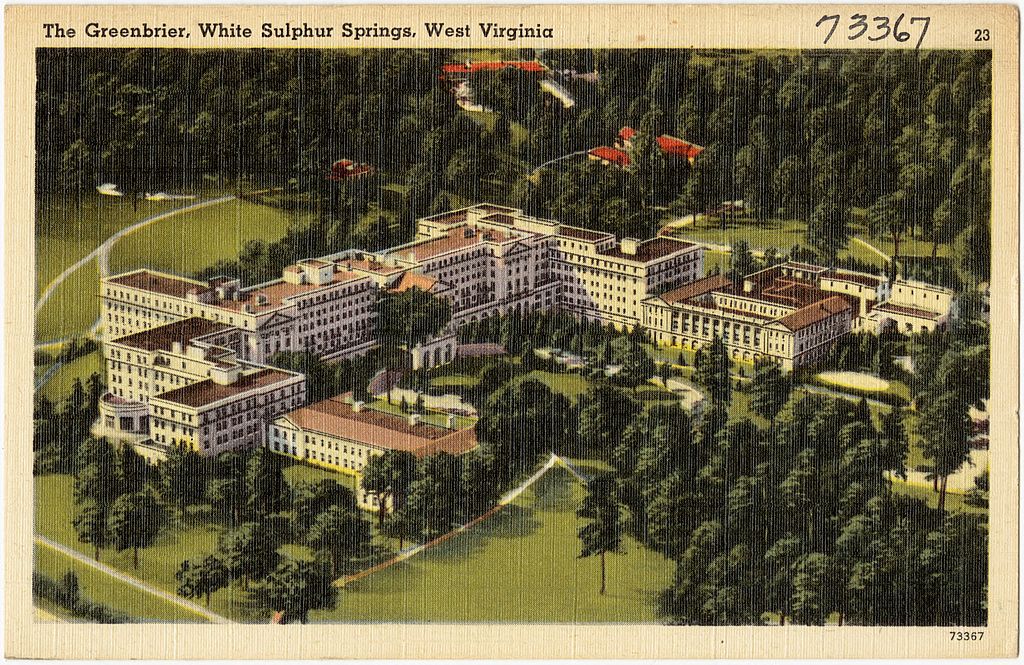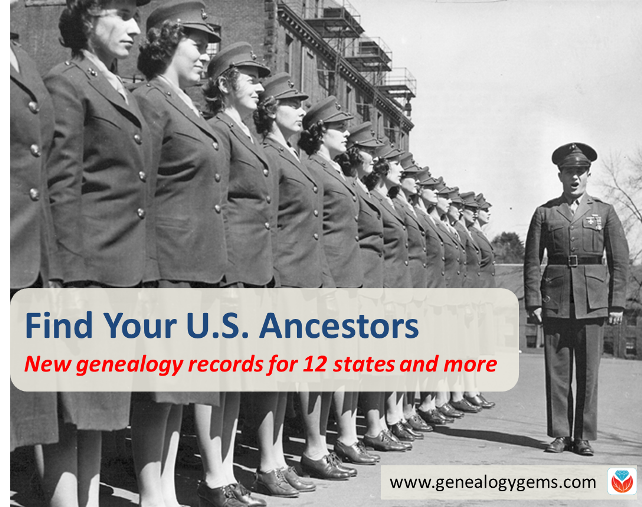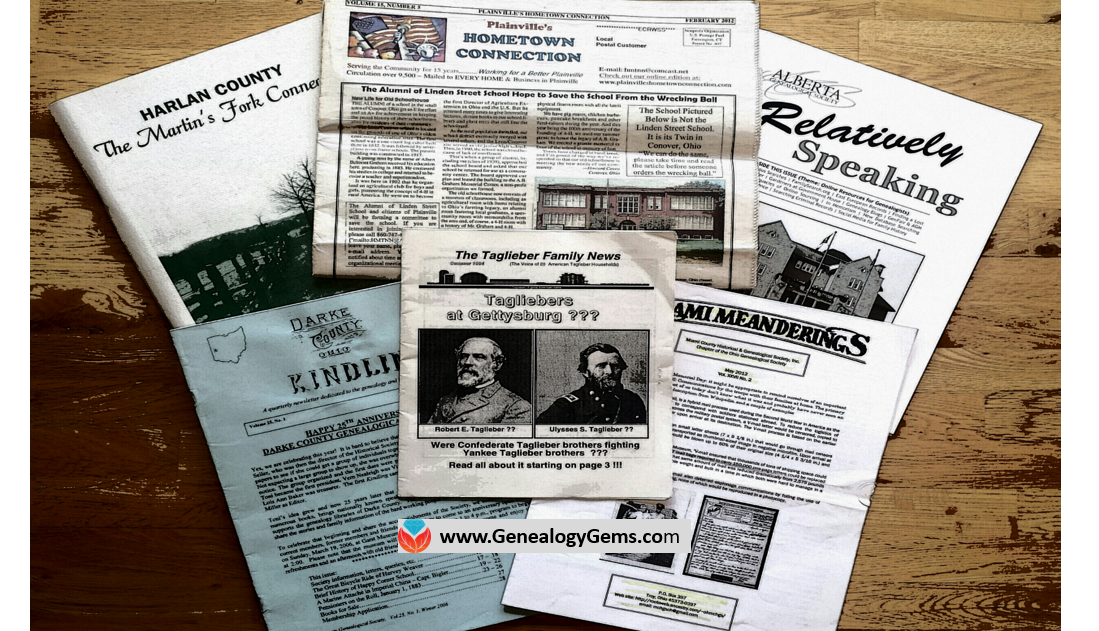Preserving the Memories of Combat Veterans
If your family has a history of military service, you want to better understand the experience of war, or you want to help preserve someone’s memories

American soliders in the Korean War. Fighting with the 2nd Inf. Div. north of the Chongchon River, Sfc. Major Cleveland, weapons squad leader, points out Communist-led North Korean position to his machine gun crew. November 20,1950. Pfc. James Cox. Wikimedia Commons Image.
of combat, you should check out Witness to War.
Witness to War aims to capture “the ‘foxhole view of combat as seen by the soldiers who experienced it.” They do oral history interviews with combat veterans, then preserve and share them through their website. They have already posted a lot of video interviews that are searchable by subject or name.
Their collection of photos, mostly snapshots taken by soldiers, is sobering and powerful. There are a lot of battlefield and other very stark images.
Do you know anyone whose memories should be included in this site? They are currently interviewing soldiers in the Atlanta and Washington, D.C. areas. All content they collect will be donated to the (US) Library of Congress Veterans History Project.
West Virginia Genealogy Research and Working with Changing County Boundaries
As many American’s know, the state of West Virginia was formed in 1863 from the state of Virginia during the Civil War. Those researching their West Virginia roots prior to that year, may wonder which counties to search and what records are available. We have some tips to make your West Virginia research a little easier!

The Greenbrier, White Sulphur Springs, West Virginia, Boston Public Library collection, Wikipedia Commons.
County level research is important when trying to find the vital records of our ancestors. Birth, marriage, and death records typically are found on the county level. This means you will need to obtain a copy of these types of certificates from the local courthouse or other county repository, such as a county archives.
But what happens when the state or county wasn’t around when your ancestor lived there? Such is the case with this Genealogy Gems reader. Here is her question regarding West Virginia research:
I have a 3rd great-grandfather I am trying to find with his parents who may have been born in Greenbrier County, West Virginia. He was born in 1814. My question is that Greenbrier County was in Virginia at the time of his birth. Now it is in West Virginia which was made a state in the 1860s, so where do I look for his records? Finding his parents has been a brick wall! What would you suggest?
Birth Records in the 1800s
The first thing we want to address is the hope that this reader will find a birth record for 1814. Early birth records of this time-frame were typically kept by the churches in the form of christening or baptismal records. Civil registrations of births, which were created by the local or federal government, were not kept regularly for American states until much later. The earliest cities and states to require civil registration can be seen here, but a few examples include: New York in 1880, Virginia in 1853,and Florida in 1865. [1]
Because birth records can not always be located in church or civil registration for this early time period, we suggest using alternate records as your supporting evidence. Substitute birth records might be, but are not limited to: school records, censuses, pension records, marriage records, and biographical sketches. (Click these links to learn more about each type of record.)
West Virginia Genealogy Research: County Level
Next, let’s discuss the uniqueness of researching in West Virginia. West Virginia was created in 1863 out of the state of Virginia. Many of the counties that were once in Virginia, kept the same name and retained their records when they became part of West Virginia.
There is a wonderful resource in the book titled “Red Book: American State, County, and Town Sources” which was edited by Alice Eichholz. This book has a chart for each U.S. state listing the year each county was formed and from what parent county. To find the chart, flip through to the West Virginia section. Each county is listed in alphabetical order. In this case, we would locate “Greenbrier” and take note that according to the chart, Greenbrier County, West Virginia was formed in 1778 by portions of both Montgomery and Botetourt County, Virginia. A chart like this is helpful for any genealogist in determining which counties should be researched.
Greenbrier County, West Virginia: A Timeline of Changing County Boundaries
I took the liberty of looking further into Greenbrier County, West Virginia by examining more closely the changing county boundaries of this county over time. I did this by using the chart I mentioned above found in the Red Book. First, I found Greenbrier county and it’s parent county, then, I searched the list for further instances when parts of Greenbrier county were used to form newer counties. You see, we want to see the changes of this county’s boundaries so that we know what possible places to look for records. Let me show you what I found. We are going to need a time line for this!
- 1778: Greenbrier county was originally formed in 1778 from two parent Virginia counties: Montgomery and Botetourt.
- 1788: part of Greenbrier County, Virginia became Kanawha County
- 1799: Greenbrier shrunk further when a portion of its boundaries became Monroe County, Virginia
- 1818: Nicholas County, Virginia formed from Greenbrier
- 1831: part of Greenbrier created the new county of Fayette, Virginia
- 1863: Greenbrier county, Virginia became part of the State of West Virginia
- 1871: Summers County, West Virginia was created by a small portion of Greenbrier
As you can see, our Genealogy Gems reader may need to visit and research several county repositories both within the state of Virginia and West Virginia.
Greenbrier county is rather unique, as it had boundary changes quite regularly. It may be difficult to visit each of these county courthouses, spanning many miles apart, in hopes of finding targeted records for their ancestor. For this reason, our reader may wish to begin at the West Virginia State Archives. At most state archive repositories, records for all the counties can be easily looked at via microfilm. This may save valuable travel time. (Note: Before visiting any state archives facility, call ahead to verify what information and records they have, so that you do not have a wasted trip.)
There is also a free guide at Family Tree Magazine for West Virginia genealogy research that we highly recommend.
More on Advanced Research Strategies
 Changing county boundaries is just one area that must be mastered to ensure accurate genealogy research. Here are 3 more articles that will help you beef up your genealogy research skills:
Changing county boundaries is just one area that must be mastered to ensure accurate genealogy research. Here are 3 more articles that will help you beef up your genealogy research skills:
The Genealogy FAN Club Principle Overcomes Genealogy Brick Walls
Missing Census or Missing Family: Legacy Tree Genealogists Answer
Resolving Three Common Conflicting Evidence Problems in Genealogy
ARTICLE REFERENCES
[1] Johni Cerny, “Births and Deaths in Public Records,” originally written in “The Source: A Genealogist’s Guidebook to American Genealogy,” online article, Ancestry Wiki, accessed 20 Feb 2017.German Place Names: Find Your Ancestors’ Hometown with This Free Online Tool
German place names have changed dramatically over time, so it can be challenging to identify your German ancestors’ place of origin. This free online tool helps family historians navigate changes in German place names, jurisdictions, and boundaries. Thank you to...Find Your U.S. Ancestors in These New Genealogy Records Online
Learn more about U.S. ancestors in new genealogy records for Navy and Marine officers, WWI veterans, historical and genealogical journals, and new genealogy records for 12 U.S. states: Ala., Ark., Hawaii, Kan., La., Mass., Miss., Mont., N.Y., Texas, Utah, and Va.

Following are new genealogy records (and updated collections) for the U.S. and several U.S. states. In which may your ancestors appear?
U.S. Navy and Marine Corps Officer Registries. Ancestry.com subscribers may search a new database, “U.S., Navy and Marine Corps Registries, 1814-1992.” From the collection description: “This collection includes registers of officers of the US Navy and Marine Corps from between the years of 1814 and 1992. Within these records you can expect to find: name, rank, ship or station.” (Note: the above image shows the first group of female Marine officer candidates in 1943; click here to learn more and see this image’s citation.)
World War I Veteran’s History Project: Part II Launches. The Veterans History Project has launched “Over There,” the second in a three-part, online web series dedicated to United States veterans of the First World War. “Over There” highlights 10 digitized World War I collections found in the Veterans History Project archive. Click here to access Part II and other veterans’ collections featured in “Over There.” Part III will be available in fall of 2017. (Click here to read the full announcement from the Library of Congress.)
U.S. and Canada journals.  PERSI, the Periodical Source Index, has been updated with historical and genealogical journal content covering Ontario, Canada as well as Massachusetts, Minnesota, Missouri, Michigan, & Rhode Island. Search PERSI at Findmypast.com to discover articles, transcribed records, and images of your ancestors and their communities, churches, schools and more in thousands of journals. Some journals are index-only and others have digitized articles: click here to learn more about PERSI.
PERSI, the Periodical Source Index, has been updated with historical and genealogical journal content covering Ontario, Canada as well as Massachusetts, Minnesota, Missouri, Michigan, & Rhode Island. Search PERSI at Findmypast.com to discover articles, transcribed records, and images of your ancestors and their communities, churches, schools and more in thousands of journals. Some journals are index-only and others have digitized articles: click here to learn more about PERSI.
Statewide: New genealogy records
- Alaska: Ancestry.com has a new database of Alaska, Vital Records, 1818 -1963. It contains birth, marriage, and death records.
- Arkansas: A new digital exhibit tells the story of the first African-American college west of the Mississippi River, located in Phillips County. Lives Transformed: The People of Southland College “includes photos and scanned images of letters, circulars, forms, the Southland newspaper and other ephemera, including invitations, the catalog of studies, a diploma, and a commencement program,” states a news report.
- Hawaii: Over 300,000 indexed names have been added to a free FamilySearch.org collection of Hawaiian obituaries since 1980.
- Kansas: New browsable image collections of Kansas state census records for 1865, 1875, 1885 and 1895 are now free to search at FamilySearch.org. The growing size of each collection by year–from 4,701 pages in 1865 to 116,842 pages in 1895–witnesses the tremendous growth of this prairie state after the Homestead Act of 1862 opened its land for cheap purchase and settlement. (Did you know? Kansas census records 1855-1940 at Ancestry.com are also available for free to Kansas residents.) Click here to learn more about state census records in the U.S.
- Louisiana: Over 100,000 new images and thousands of indexed names have been added to FamilySearch’s free collection of Louisiana death records (1850-75, 1894-1960).
- Massachusetts: More than half a million names are in 22 volumes of sacramental records (baptisms, confirmations, marriages, deaths) for the Cathedral of the Holy Cross, Archdiocese of Boston, now online at AmericanAncestors.com.
- Mississippi: Ancestry.com has updated its collection of Mississippi Naturalization Records, 1907-2008. This collection pertains to naturalizations finalized after 1906, when most were taken care of in federal courts.
- Montana: Find a new collection of Montana County Marriages, 1865-1993 at Ancestry.com. Details for both the bride and groom may include name, age at marriage, and marriage date/place. (You may also access this collection for free at FamilySearch.org.)
- New York: The Leon Levy BAM Digital Archive has added more than 70,000 playbills, posters, and ephemera from the history of the Brooklyn Academy of Music, dating to the Civil War era. (We found this in a New York Times report.)
- Texas. Ancestry.com has updated its database, “Texas, Select County Marriage Records, 1837-2015.” The collection description states, “This collection consists of a mix of marriage licenses, returns, certificates, affidavits, and indexes. The documents that are available in this database vary depending on the county. All marriage records include the names of the bride and groom, as well as the date of the license and/or marriage. In many instances, additional details are available as well.” This collection continues to be updated: keep checking back!
- Utah: There’s a new digital archive of photos, yearbooks, and other documents relating to the history of Brigham Young College in Logan, Utah. The school taught high school and college courses and was open 1877-1926. Learn more about it in a news report at HJnews.com.
- Virginia: A decade’s worth of obituaries from the Evening Star (Winchester, 1899-1909) are now available at subscription site Findmypast.com.
 Did you see the new Genealogy Gems Book Club announcement for this week? It’s a new memoir by a U.S. journalist who tracks down an old family story about her immigrant roots. You won’t want to miss this family history murder mystery! Click here to learn more about the book and watch a trailer for its PBS documentary.
Did you see the new Genealogy Gems Book Club announcement for this week? It’s a new memoir by a U.S. journalist who tracks down an old family story about her immigrant roots. You won’t want to miss this family history murder mystery! Click here to learn more about the book and watch a trailer for its PBS documentary.
Disclosure: This post contains affiliate links and Genealogy Gems will be compensated if you make a purchase after clicking on these links. Thank you for supporting Genealogy Gems!
